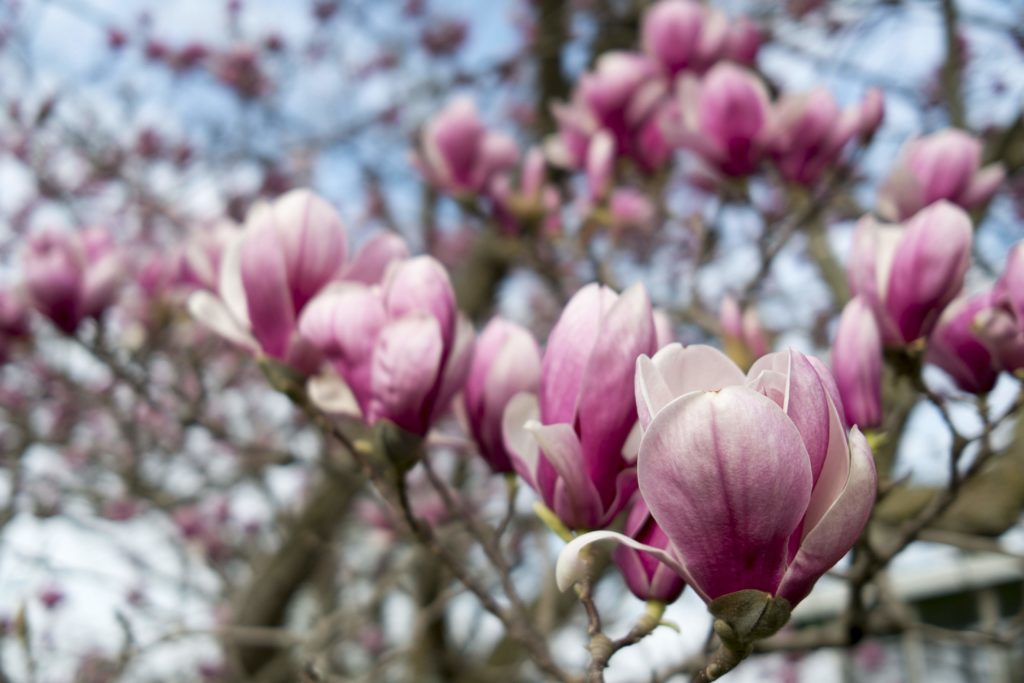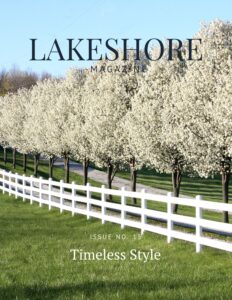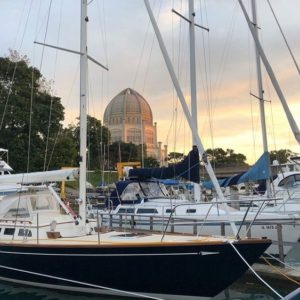Chicago’s motto, “Urbs in Horto” or City in a Garden, may surprise you. After all, this city best known for its glittering skyline, historic architecture, and culinary indulgences might not call to mind finely designed garden spaces. But one thing Chicago does better than any of the many world-class cities I’ve visited is public gardens and parks. After our annual winter hibernation, native Chicagoans and tourists flock to parks along the lakefront and throughout the city to enjoy these beautifully designed and lovingly maintained public spaces. Wide lawns and mature trees offer a place to recline and take in the sight as spring unfolds into summer. And the flowers. Oh my goodness, the flowers! In thousands of beds, parkways, and planters Chicago shows off an unrivaled display of annual flowers that amazes me in every season. As a long-time resident, I look forward to seeing what Chicago and its North Shore suburbs have planned each spring and invite you to join me on a brief tour of some of my favorite spots. All of these sights are completely free to visit (parking fees apply) and open to the public year-round.
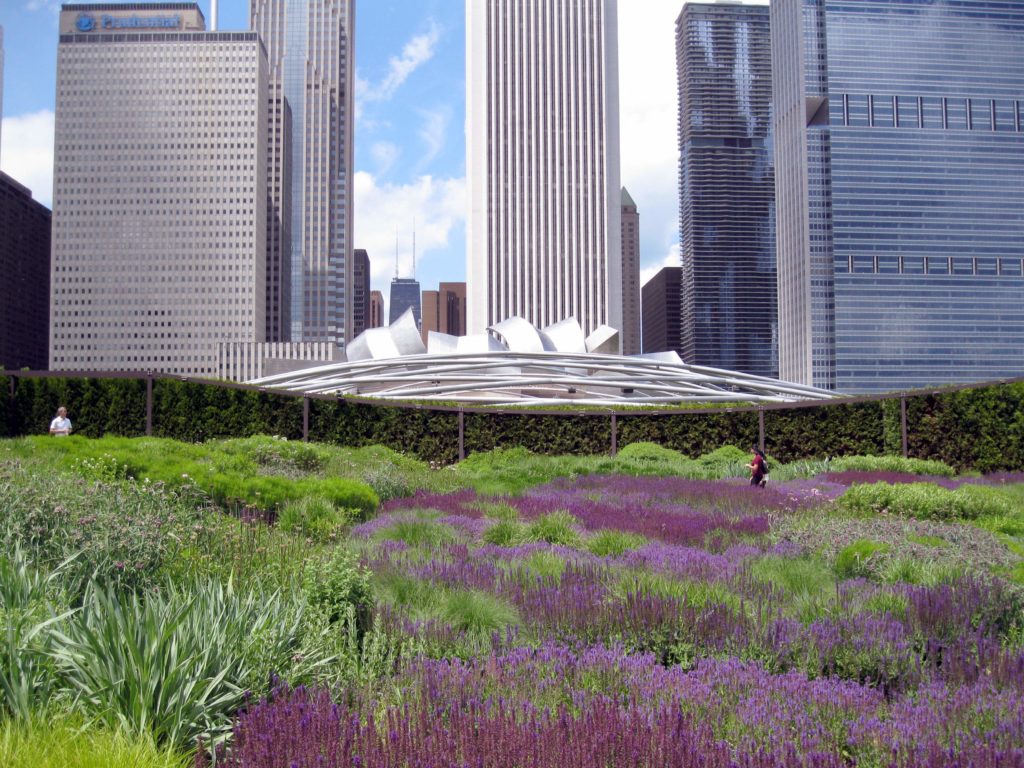
Lurie Garden in Millennium Park
Millennium Park, completed in 2004, is the crowning achievement of Chicago’s lakefront park system. With so many features including the Cloud Gate, Crown Fountain, Pritzker Pavilion, and Maggie Daley Playground, it might be easy to miss the lovely Lurie Garden. The garden is found at the eastern side of Millennium Park over an elegant footbridge and just inside a striking 15-foot tall hedge that symbolically represents the “big shoulders” of Chicago. The Lurie Garden in mid-spring is an undulating expanse of purple prairie plants including catmint and salvia. Later in the season, more native plants take center stage with coneflowers and lilies attracting butterflies, finches and other pollinators to this urban oasis. In spite of the bustling city on every side, this place is a tranquil, meditative oasis of calm.
The most incredible view is from above and can be easily seen from the shining footbridge connecting the park with the modern wing of the Art Institute of Chicago. Better yet, take in the sight from the full-height glass windows of the museum itself.
To find our next stop, head north on Michigan Avenue and enjoy the beautiful median and parkway plantings.
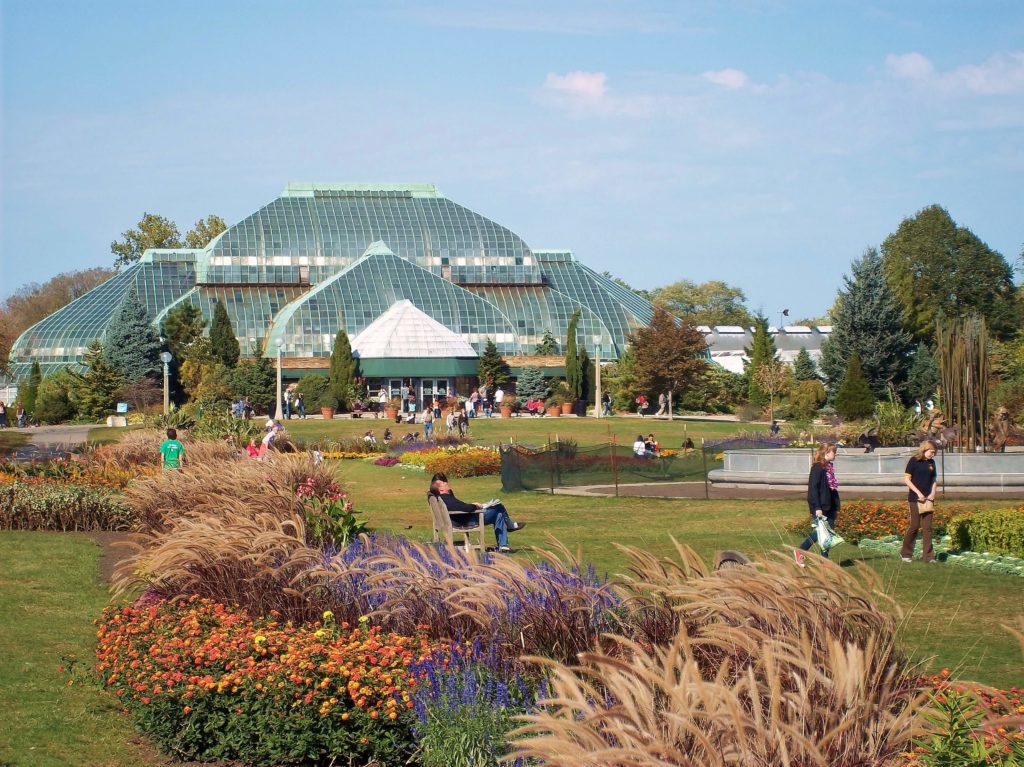
The Lincoln Park Conservatory
This is certainly one of the most beautiful spots in Chicago. Built in 1893, the ornate glass conservatory is a respite from the city in every season. Each of the four rooms houses tropical plants, a koi pond, and seasonal floral exhibits. Just south of the conservatory is a century-old formal garden with a changing annual display of plants surrounding a delicate fountain. The French-style garden offers three seasons of interest as spring bulbs give way to summer and early fall flowering plants.
Just east of the conservatory, practically hidden in plain sight, is the Alfred Caldwell Lily Pool. Originally created in the 1930’s, the lily pool is a beautiful example of Prairie School Landscape Architecture combining simple structures created from natural limestone in a style that fits harmoniously into the natural setting. This local treasure was nearly lost to neglect in the last century but was reborn through the dedication of local conservation groups in the early 2000s and was listed on the National Register of Historic Places in 2006.
Before you leave the area, visit the sprawling gardens just across Stockton Drive on either side of the William Shakespeare monument.
Though you could truly spend years wandering through the many formal and semi-wild garden spaces of Chicago’s parks, I invite you to take a trip north on Lake Shore Drive, past colorful median plantings, to the campus of Northwestern University in Evanston.
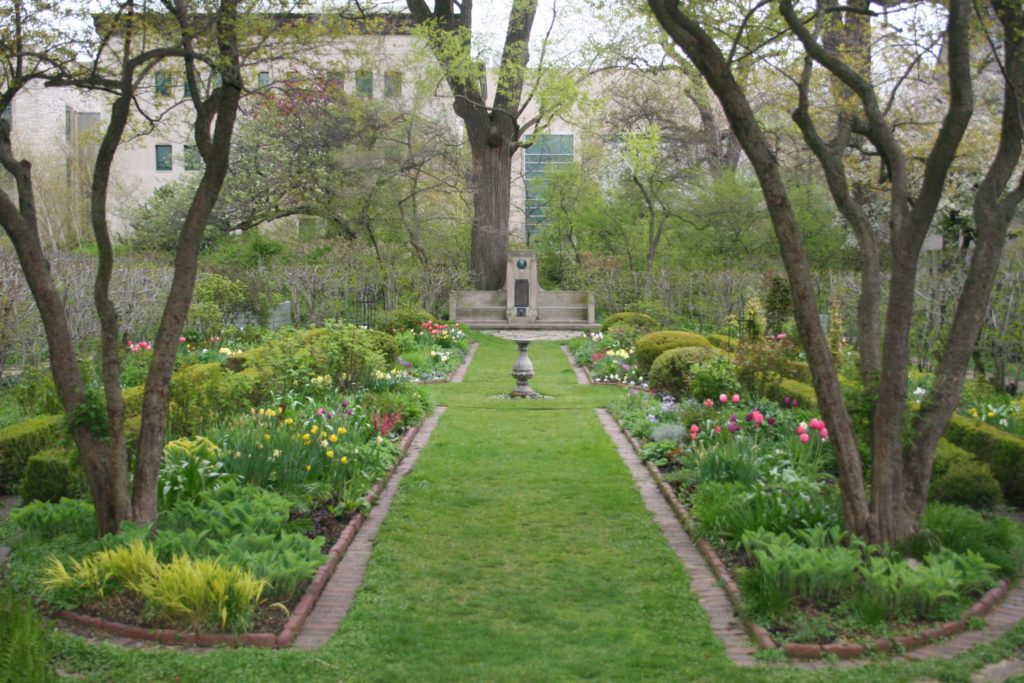
The Shakespeare Garden
Another hidden garden can be found on the impressive campus of Northwestern University. Plants and flowers play a prominent role in the works of William Shakespeare and gardens that pay tribute to his works exist throughout the world. A lovely example is found just north of the Garret Theological Seminary on Northwestern’s Evanston Campus. The Shakespeare Garden is a joint project of Northwestern, the city of Evanston, and the century-old Garden Club of Evanston. The garden, established in 1915, was designed by renowned landscape architect, Jens Jensen and is hidden just beyond a tall hedge that gives the effect of a private English walled garden. Around the formal beds, a natural path follows the perimeter and crosses the center past a vintage sundial. From late spring to mid-summer delicate blooms unfold in a soft pastel color palette. I’ve visited the spot many times and have almost always had the garden all to myself. It feels like a real secret garden.
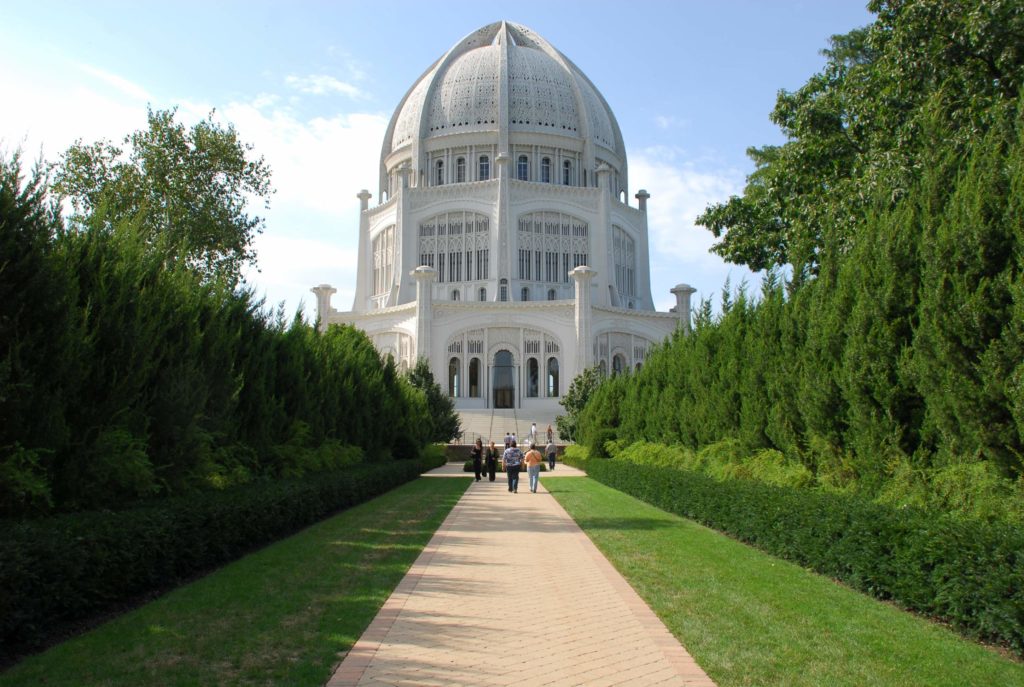
Baha’i House of Worship
Just a few miles north, another formal garden surrounds the Baha’i House of Worship in Wilmette, Illinois. The temple, as well as the history and philosophy of the Baha’i organization, are the real draw, but the gardens that surround the imposing temple nearly steal the spotlight in spring and summer. Each of the distinct garden rooms is defined by a hedge to focus attention internally. The rooms feature long greens, reflecting pools and fountains bordered by colorful annual and perennial beds. In the spring, sweet-smelling hyacinths and tulips are on display along with brightly colored pansies. Throughout the summer hydrangeas and roses take over and the annuals take on a fresh design each year.
Continuing north on Sheridan Road the stately mansions of the North Shore offer their own garden displays. Just past the striking sights of North Shore Congregation Israel and the exclusive Lake Shore Country Club, Sheridan Road turns to the west along the Lake and Cook County border. Our final destination is in sight, the world-class Chicago Botanic Garden.
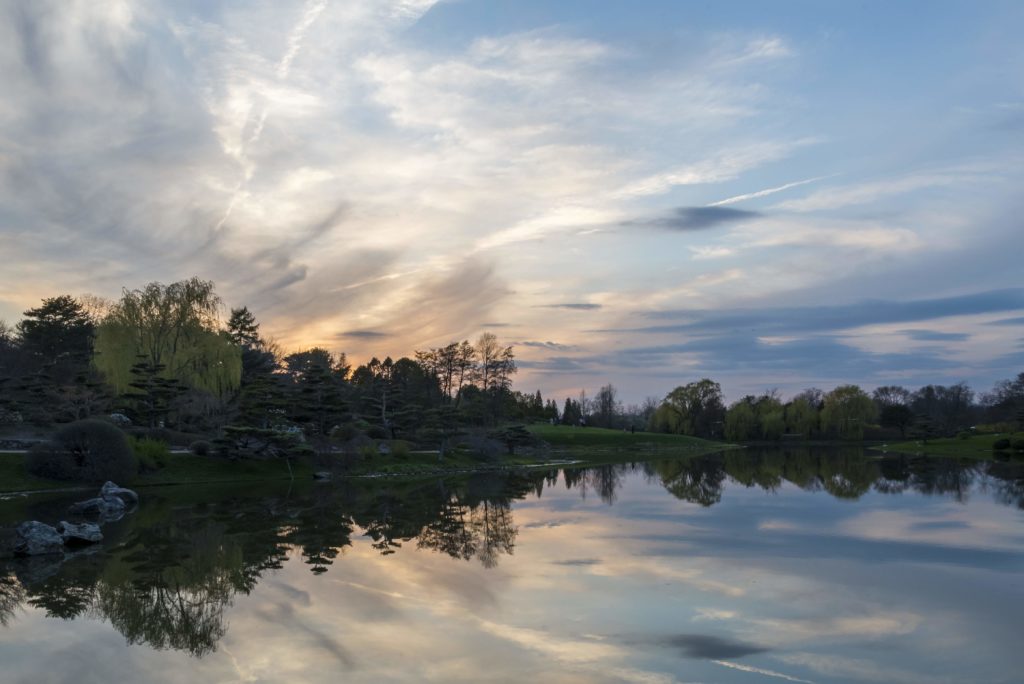
The Chicago Botanic Garden
This place is my idea of paradise. Twenty-six gardens sprawl over nine islands and nearly 400 acres. The incredible variety of landscape design styles and plant varieties is staggering. Upon entering the garden through the visitors’ center you’ll cross a flower-draped bridge to the ever-changing crescent garden where spring offers a spectacular display of tulips and other flowering bulbs followed by beautifully designed annual gardens later in the season. If you time your spring visit right, the bulb garden will be full of so many unusual flowers you’ll question everything you thought you knew about spring bulbs. For a few weeks in May, the crabapple trees are covered in pink and white blossoms and Dutch iris blooms profusely along the water’s edge. Migratory birds flock to the garden in all seasons and join the resident swans that paddle gracefully between the islands.
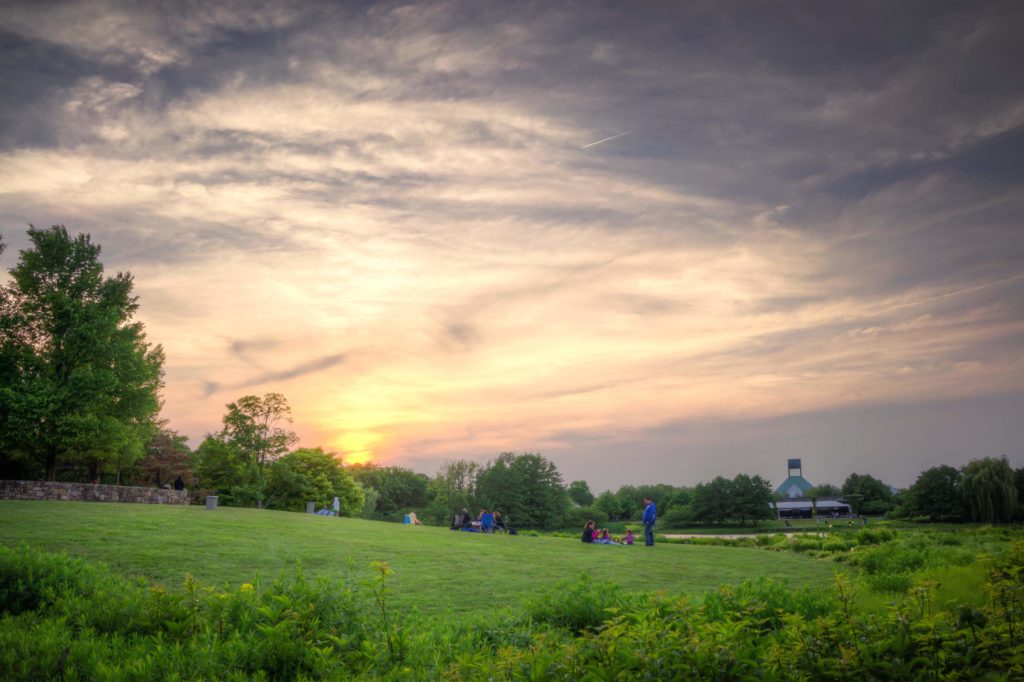
Every square foot of this garden is stunningly beautiful in every season, but I do have a few favorite corners. In spring, and all seasons really, I love the English Walled Garden where low-growing classic plants surround ponds and fountains. Wide benches urge you to rest and take it all in. In May, mature wisteria vine will be in fragrant bloom. Don’t miss the Japanese garden in spring when the crabapples and azaleas are blooming. Walk to the far side of the Japanese garden island and find a patch of Dutch iris next to the zig-zag bridge that only blooms for a few weeks each year. Finally, across a bridge on Evening Island, take in the view of flowering trees and blooming prairie plants that are best seen from this perspective. There is so much beauty throughout the garden, so take your time. Stay all day. I encourage you to purchase a membership and visit often in different seasons. Just when you think you know this place well, it will surprise you all over again.
